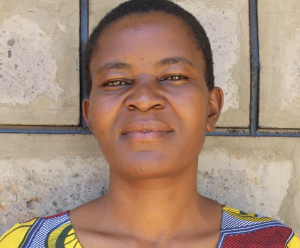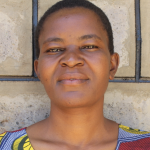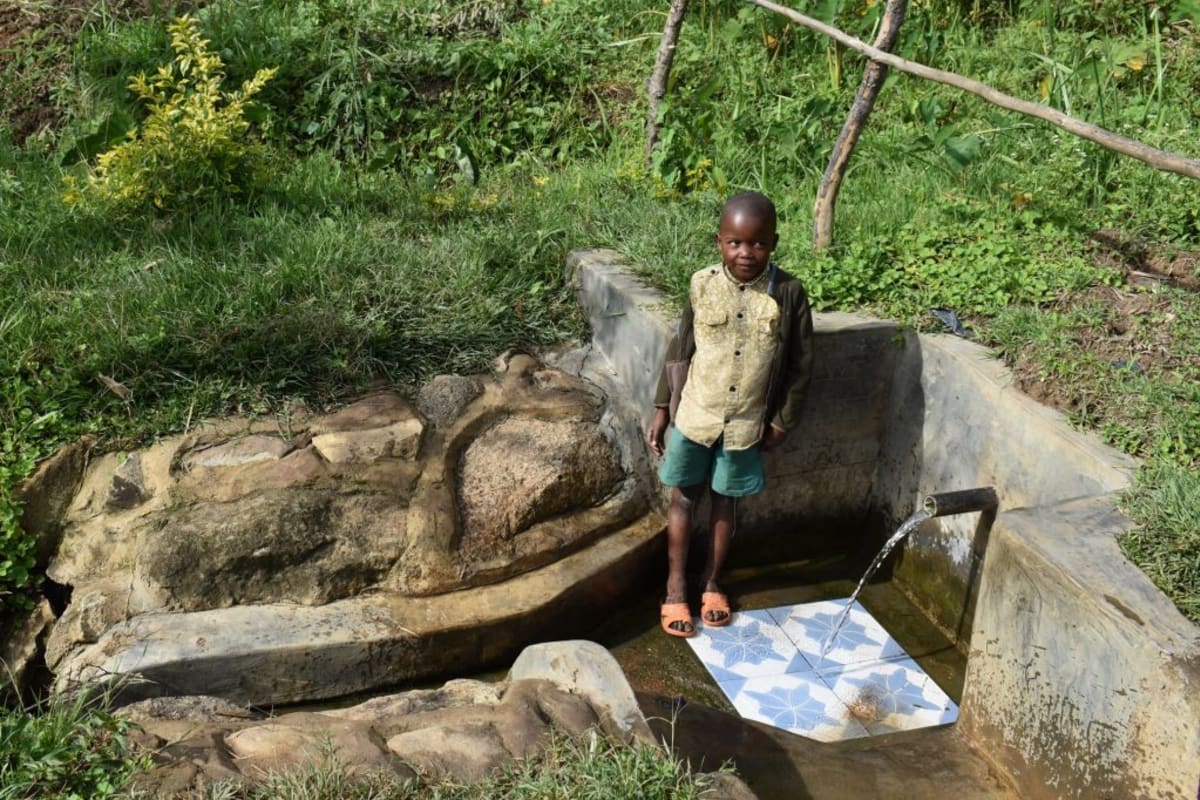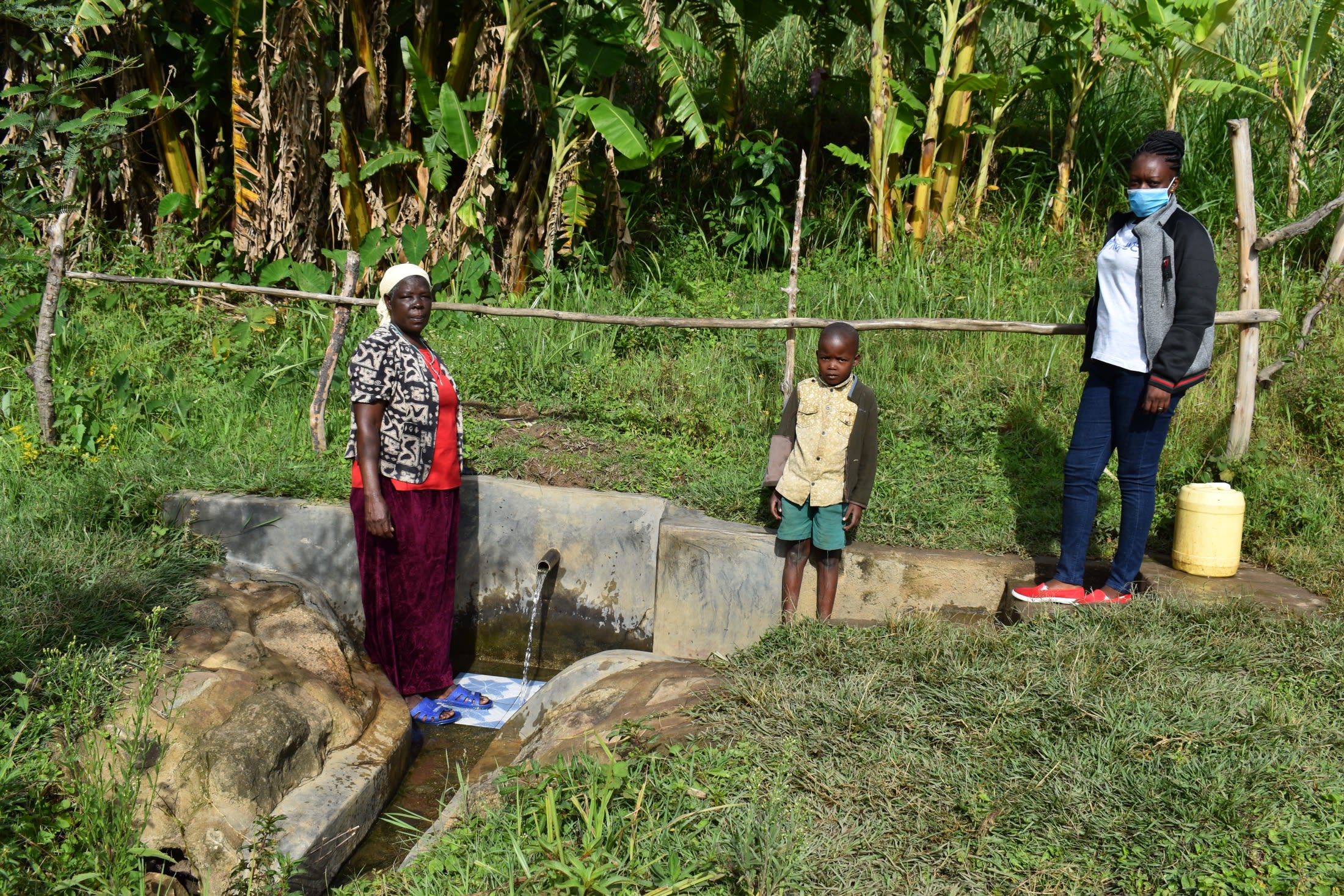Life in Mahira, Kenya
Mahira village is highly vegetated with trees and farm crops. The setting is rural with the place being peaceful. The people in this village construct both permanent and temporary houses. The temporary ones are made of mud, wood, and iron sheet roofs.
The livelihood of this community largely depends on farming. They grow sugarcane on a large scale for commercial purposes. They also grow crops for home consumption including arrowroot and greens.
The majority of people in this village are Christians, but everyone comes together during several occasions like weddings, funerals, and house construction. Some have formed small welfare groups and meet in the members' houses regularly.
Relying on Contaminated Water
Litinyi Spring serves 140 people, most of whom have to make 13 trips to the spring and back every day to fetch enough water for all of their drinking, cooking, and cleaning needs. On laundry days, that number increases. Each walk takes from 15-30 minutes, depending on where community members live in relation to the spring.
That is a lot of time spent on fetching water, especially considering the water is not even safe for consumption.
"This water is not safe for our life. The spring is open to contamination," said teenager Zipporah, whom we met at the spring.
The area leading to Litinyi Spring is steep. At the time of our most recent visit, the farms around the spring had been plowed in readiness for planting once the rains started. Once they come, however, the downhill runoff carries chemicals from the farms in addition to animal waste and human waste. Since it is open, animals can even drink straight from the source.
The contaminated water brings many waterborne and water-related illnesses to the community members including diarrhea and typhoid. Treatment of typhoid, in particular, takes a lot of money to buy medicine, which is an added cost to the members of this community that they would have otherwise spent on basic needs, school fees, or other development projects.
Then again, many people here do not have money to buy the medicine at all. Some have died because of the waterborne diseases they caught from drinking water from unprotected Litinyi Spring.
"I personally had diarrhea and when I went to seek medication, I was told that I had taken dirty water. The medication cost was too high for me," said Agnes Kutoto, a farmer in Mahira.
The number of latrines across the community is low - about 50% of all households have them - which means some people have to share their latrines with their neighbors. Others are left to use the bushes. People here already understand the importance of covering the containers they use for storing drinking water, but they need to be trained on keeping their water containers clean, treating water before storing it, and how to handle it at the spring, on the way, and at home based on the practices we saw during our initial visits.
What We Can Do:
Spring Protection
Protecting the spring will help provide access to cleaner and safer water. Construction will keep surface runoff and other contaminants out of the water. With the community’s high involvement in the process, there should be a good sense of responsibility and ownership for the new clean water source.
Fetching water is a task predominantly carried out by women and young girls. Protecting the spring and offering training and support will, therefore, help empower the female members of the community by freeing up more of their time and energy to engage and invest in income-generating activities and their education.
Training
We will hold a 1-day intensive training on improved hygiene, health, and sanitation habits in this community. With the community’s input, we will identify key leverage points where they can alter their practices at the personal, household, and community levels to affect change. This training will help to ensure participants have the knowledge they need about healthy practices and their importance to make the most of their water point as soon as water is flowing.
Our team of facilitators will use Participatory Hygiene and Sanitation Transformation (PHAST), Community-Led Total Sanitation (CLTS), Asset-Based Community Development (ABCD), group discussions, handouts, and demonstrations at the spring to cover a wide variety of topics.
One of the most important issues we plan to cover is the handling, storage, and treatment of water. Having a clean water source will be extremely helpful, but it is useless if water gets contaminated by the time it is consumed. We will also emphasize the importance of handwashing. We and the community strongly believe that all of these components will work together to improve living standards here, which will help to unlock the potential for these community members to live better, healthier lives.
We will then conduct a series of follow-up trainings before transitioning to our regularly scheduled support visits throughout the year.
Training will result in the formation of a committee, elected by their peers, that will oversee the operations and maintenance of the spring. The committee will enforce proper behavior around the spring and delegate tasks that will help preserve the site, such as building a fence and digging proper drainage channels. The fence will keep out destructive animals and unwanted waste, and the drainage will keep the area’s mosquito population at a minimum.
Sanitation Platforms
At the end of training, participants will select 5 families that should benefit from new concrete latrine floors called sanitation platforms. Training will inform the community and selected families on what they need to contribute to make this project a success. They must mobilize locally available materials, including bricks, clean sand, and gravel. The 5 families chosen for sanitation platforms must prepare by sinking a pit for the sanitation platforms to be placed over.
All community members must work together to make sure that accommodations and food are always provided for the work teams. The families will then be asked to complete their latrines by constructing a superstructure over their platforms. These 5 sanitation platforms will then serve as examples for the rest of the community to replicate.

 Protected Spring
Protected Spring
 Rehabilitation Project
Rehabilitation Project
















































